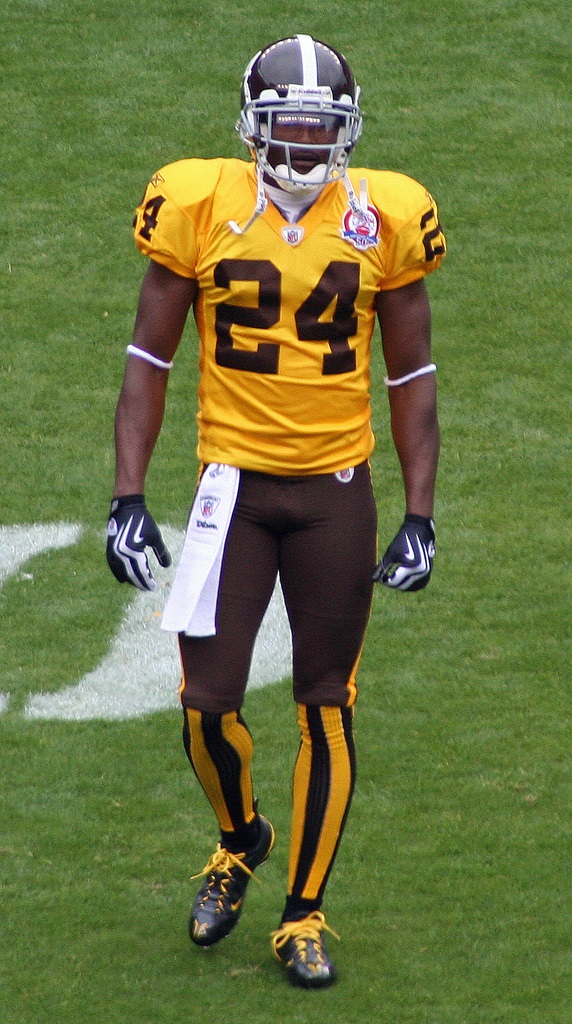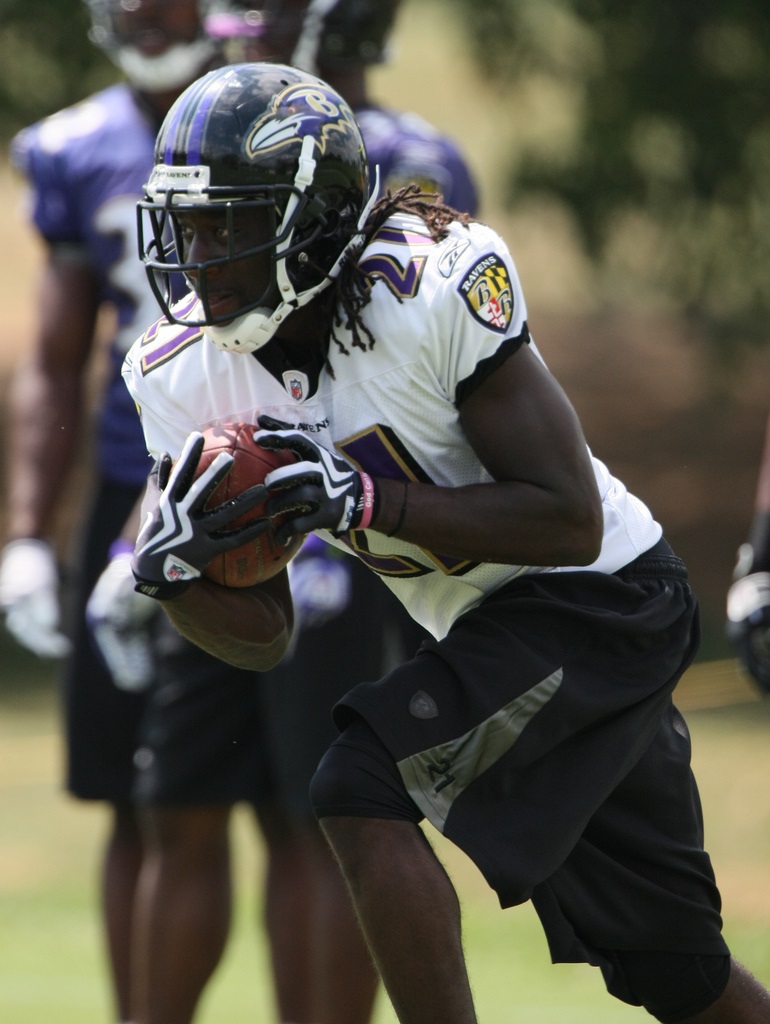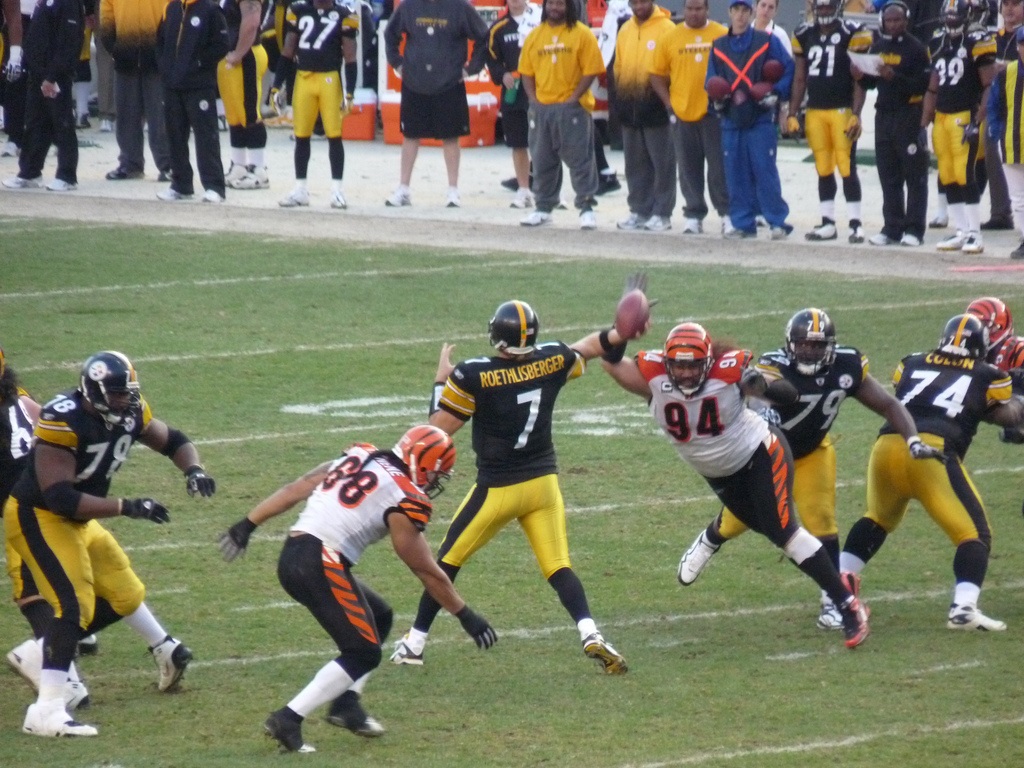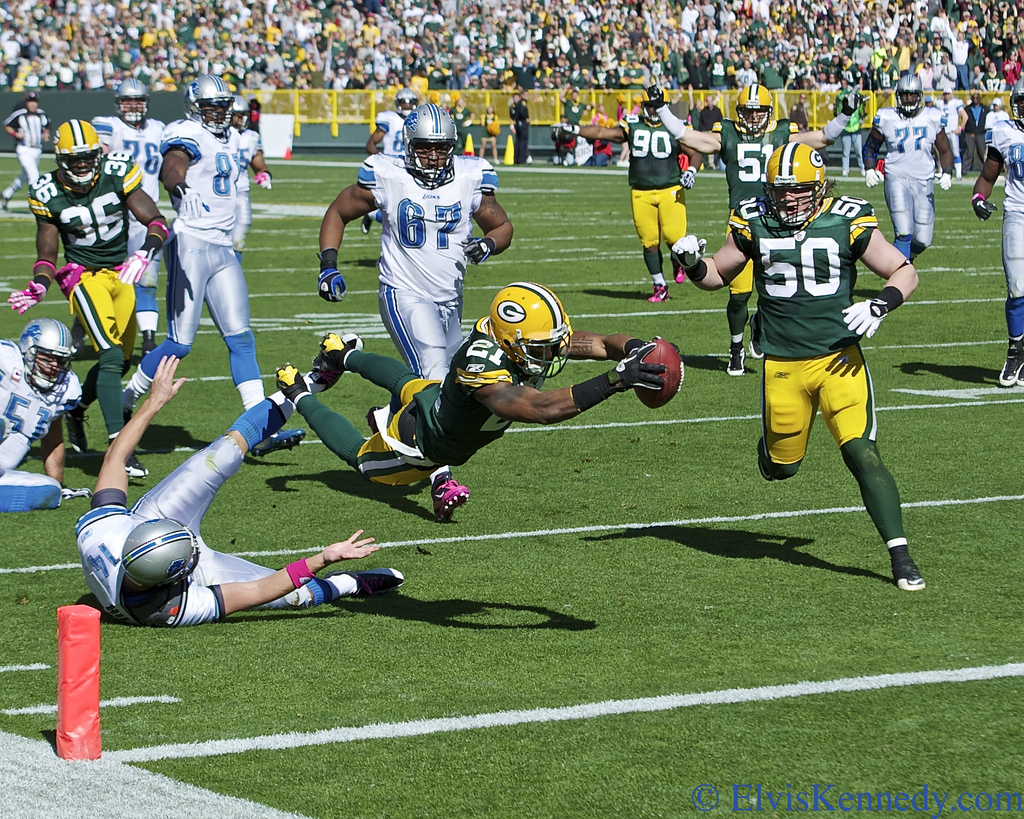[youtube=http://youtu.be/7ksRKbr16hw]
One of the most common questions I get from new readers is What did you think about [insert player name here] before [NFL team] drafted him? For the next month, I’m posting scouting reports of some of my bigger hits and misses when it comes to the past eight years of evaluating rookies for the Rookie Scouting Portfolio. I’ll also include the lessons I learned – or am still learning – from the experience of evaluating these players.
Size Matters, But Technique Matters More
“Rice will be an every-down back in the NFL and potentially a Pro-Bowl Player”
– 2008 Rookie Scouting Portfolio
Ray Rice is one of my favorite current players in the NFL. That admiration goes back to his years at Rutgers. As a rule, I tend to watch numerous games of each player even if I only formally study a handful (2-4) contests with my evaluation system. What I remember about Rice is how well he handled a huge workload.
The 5-8, 199-pound junior just came off a 36-carry, 196-yard, 3-touchdown performance against Syracuse when he faced South Florida’s top-ranked defense that had good speed up front. This unit had not allowed 100 yards to a runner in over a year – including games against the likes of Auburn, UCF (Kevin Smith), and West Virginia (Steve Slaton). The last back to post 100 yards on the Bulls?
Ray Rice.
And after a 36-carry performance, the Scarlet Knights had no problem returning to the well in the fourth quarter of this tight game and riding its star runner for a total of 39 carries for 181 yards to earn a 30-27 victory. Rice didn’t score in this game, but he had 7 first downs and 8 broken tackles.
Rice, along with Adrian Peterson, Ricky Williams, Cedric Benson, Steven Jackson, and Ladainian Tomlinson, all debunk the workload myth. The player Rice reminded me of stylistically was Emmitt Smith. I described Rice as undersized, but a tough runner with vision who gets stronger as the game progresses.
Lesson Learned from Rice: What makes Rice this type of runner and differentiates him from many backs is his pad level. There are a lot of backs that have a low center of gravity with their size, but for their height they don’t have a running style that maximizes this physical advantage. It doesn’t matter to me whether a running back is 5-6 or 6-5, if he doesn’t learn how to maximize his center of gravity, he’s more likely to leave yards on the field and take more punishment than necessary.
This doesn’t mean a runner has to have his knees and hips bent and his pads low. I loved Edgerrin James’ game for his textbook pad level and insane ability to get lower than his opponents in situations most backs couldn’t duplicate. I saw James turn more two-yard runs into five-yard gains than any back I’ve watched in the past 20 years, but it’s obvious few backs run like James.
The most important facet of good pad level is awareness and timing. Fans and writers always list exceptions like Adrian Peterson, Eddie George, and Eric Dickerson. All three run high, but what’s missed is how they lower the pads at the right time.
[youtube=http://www.youtube.com/watch?v=sK3c4GzN4pE&w=560&h=315]
What fans often miss with short runners is whether they truly run with a low center of gravity at the point of contact. They can be so preoccupied with trying to make a defender miss that the pads are too high, the knees aren’t churning, and they invite contact that drives them backwards.
Functional power is about leverage and there’s two things runners can do to maximize functional power: minimize surface area (low pad level, knees high, and feet high) and/or concentrate his power into a central spot (forearm or shoulders).
Rice doesn’t take his low center of gravity for granted. He maximizes his small surface area and combines it with burst and the skill to eliminate angles with sound press-and-cut technique as an interior runner.
This .PDF document – Ray Rice – contains two scouting reports on the runner I rated No.2 among backs in the 2008 Rookie Scouting Portfolio. This includes a loaded class of Rashard Mendenhall, Matt Forte, Felix Jones, Jamaal Charles, Darren McFadden, Steve Slaton, and Chris Johnson.
For analysis of skill players in this year’s draft class, download the 2013 Rookie Scouting Portfolio available now. Better yet, if you’re a fantasy owner the 56-page Post-Draft Add-on comes with the 2013 RSP at no additional charge and available for download within a week after the NFL Draft. Best, yet, 10 percent of every sale is donated to Darkness to Light to combat sexual abuse. You can purchase past editions of the Rookie Scouting Portfolio for just $9.95 apiece.












